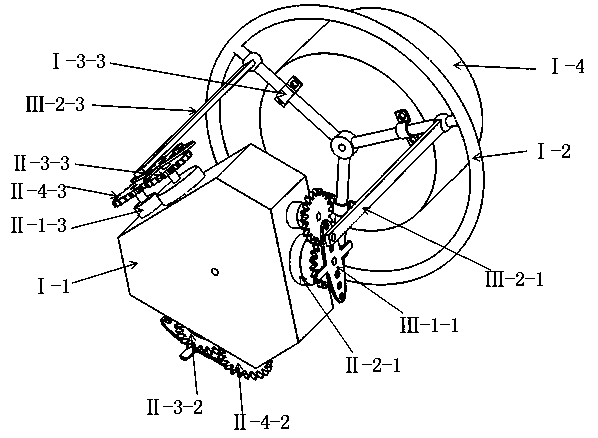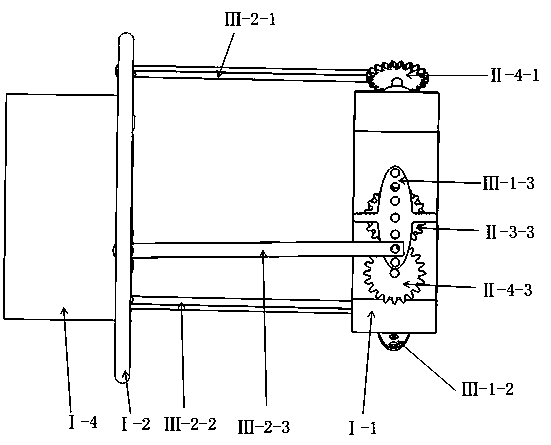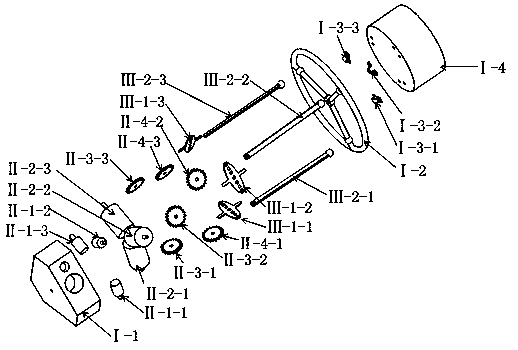A three-degree-of-freedom bionic eye
A degree of freedom, bionic eye technology, applied in the field of bionic robot vision, can solve problems such as bluntness, achieve simple control, simple mechanical structure, and reduce blind spots
- Summary
- Abstract
- Description
- Claims
- Application Information
AI Technical Summary
Problems solved by technology
Method used
Image
Examples
Embodiment Construction
[0019] A preferred embodiment of the present invention will be further described below in conjunction with accompanying drawing:
[0020] refer to Figure 1 to Figure 5 , a three-degree-of-freedom bionic eye, including three parts: a support group I, a motor group II, and a connecting rod group III. The support group I includes a base I-1, a camera chassis I-2, and three camera fixing sleeves I- 3-1, Ⅰ-3-2, Ⅰ-3-3, camera Ⅰ-4; the motor unit Ⅱ includes three motors Ⅱ-2-1, Ⅱ-2-2, Ⅱ-2-3, three Motor gears Ⅱ-3-1, Ⅱ-3-2, Ⅱ-3-3, and corresponding three encoders Ⅱ-1-1, Ⅱ-1-2, Ⅱ-1-3 and three encoder gears Ⅱ-4-1, Ⅱ-4-2, Ⅱ-4-3; the connecting rod group Ⅲ includes three turntables Ⅲ-1-1, Ⅲ-1-2, Ⅲ-1-3 and three corresponding Connecting rods Ⅲ-2-1, Ⅲ-2-2, Ⅲ-2-3; three motors Ⅱ-2-1, Ⅱ-2 are arranged on the side of the base Ⅰ-1 in an equilateral triangle distribution -2, Ⅱ-2-3 and three encoders Ⅱ-1-1, Ⅱ-1-2, Ⅱ-1-3, three motor shafts and corresponding three motor gears Ⅱ-3-1, Ⅱ -3-2, Ⅱ...
PUM
 Login to View More
Login to View More Abstract
Description
Claims
Application Information
 Login to View More
Login to View More - R&D
- Intellectual Property
- Life Sciences
- Materials
- Tech Scout
- Unparalleled Data Quality
- Higher Quality Content
- 60% Fewer Hallucinations
Browse by: Latest US Patents, China's latest patents, Technical Efficacy Thesaurus, Application Domain, Technology Topic, Popular Technical Reports.
© 2025 PatSnap. All rights reserved.Legal|Privacy policy|Modern Slavery Act Transparency Statement|Sitemap|About US| Contact US: help@patsnap.com



